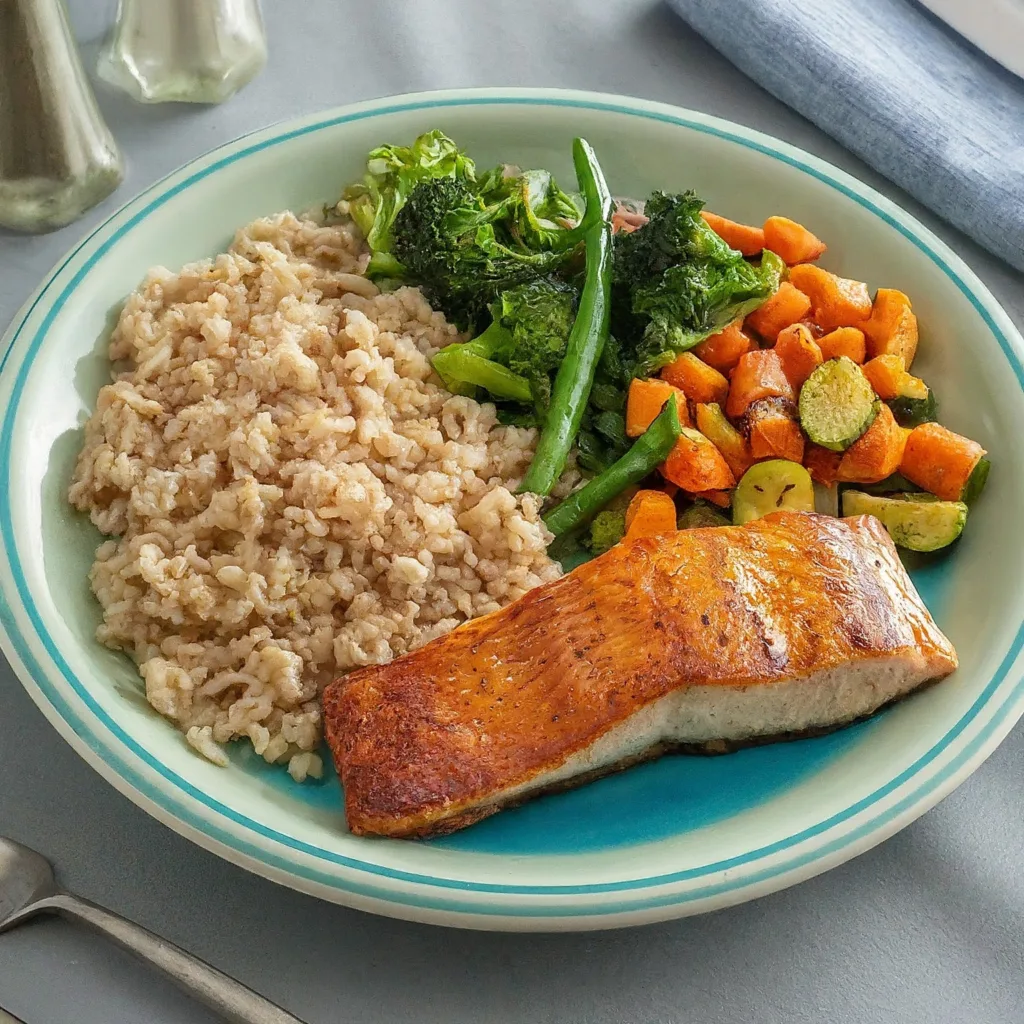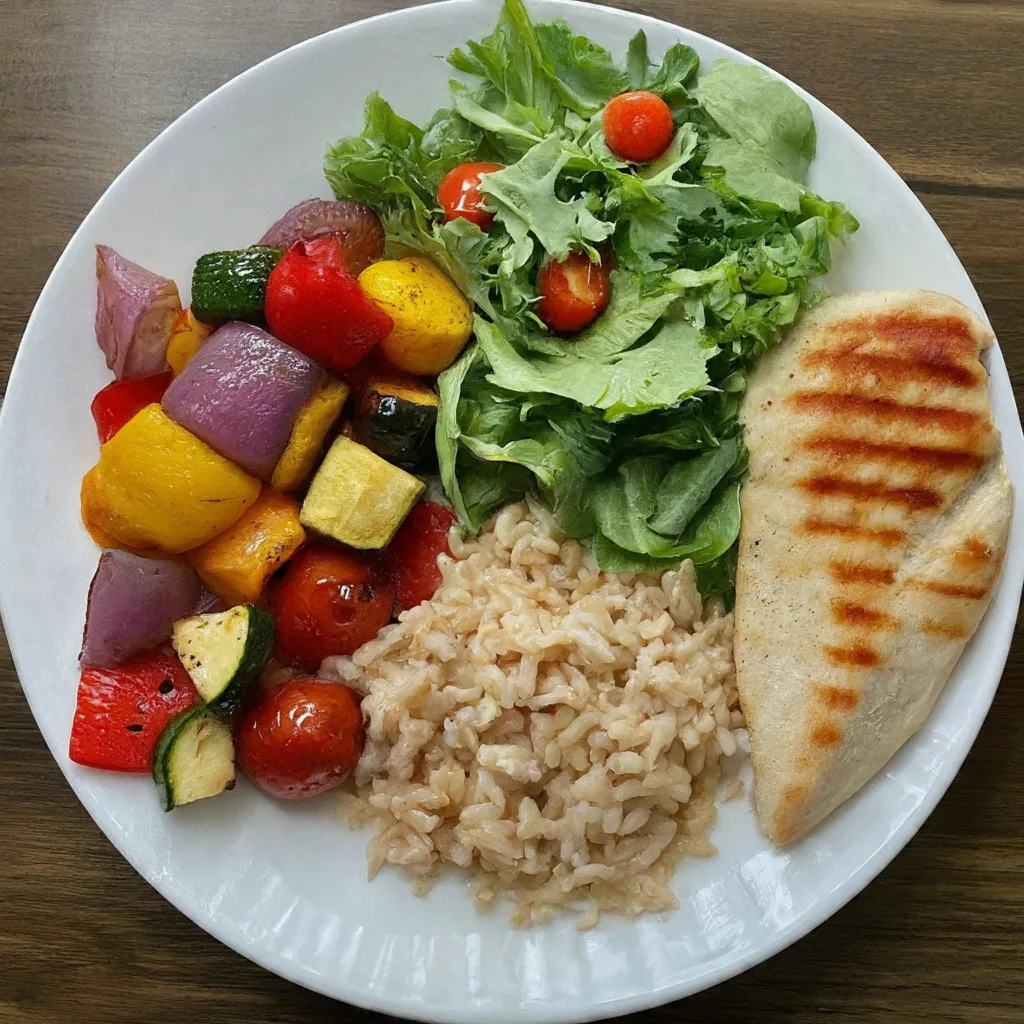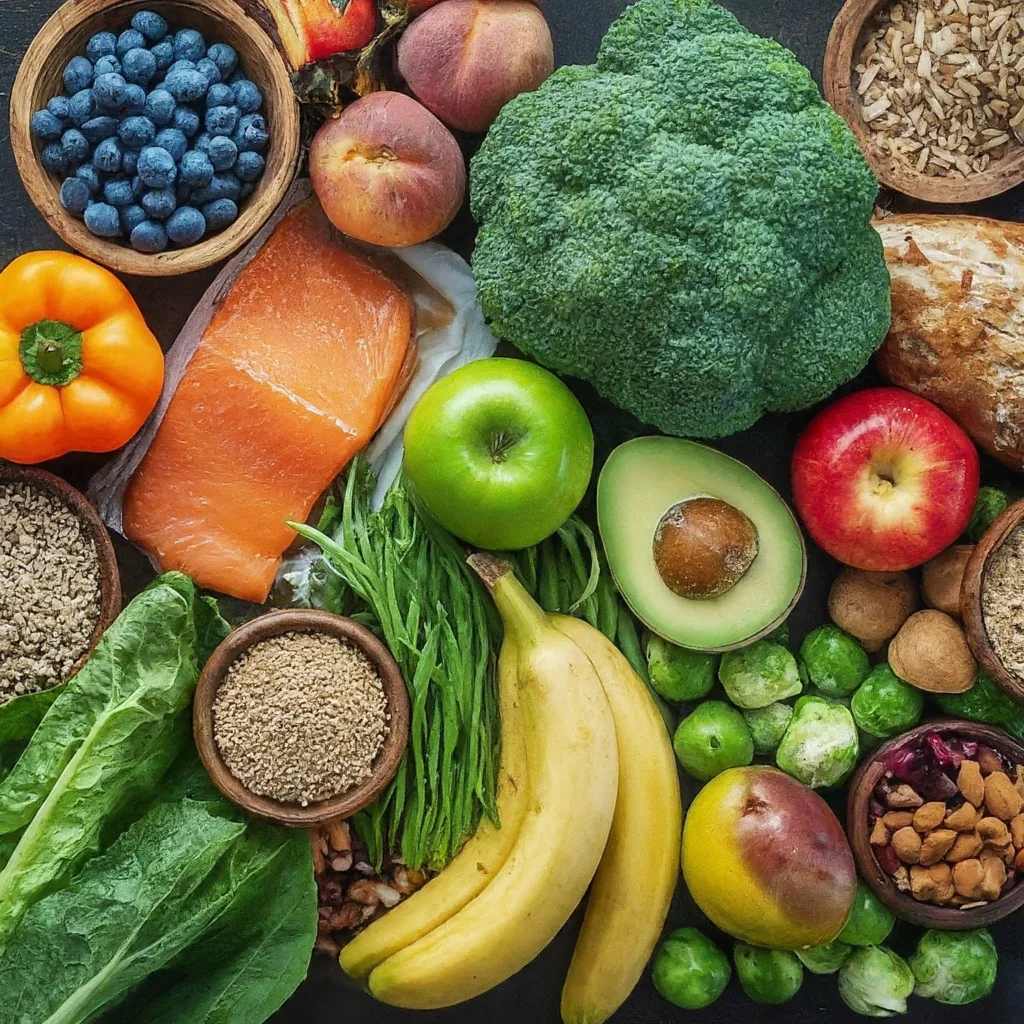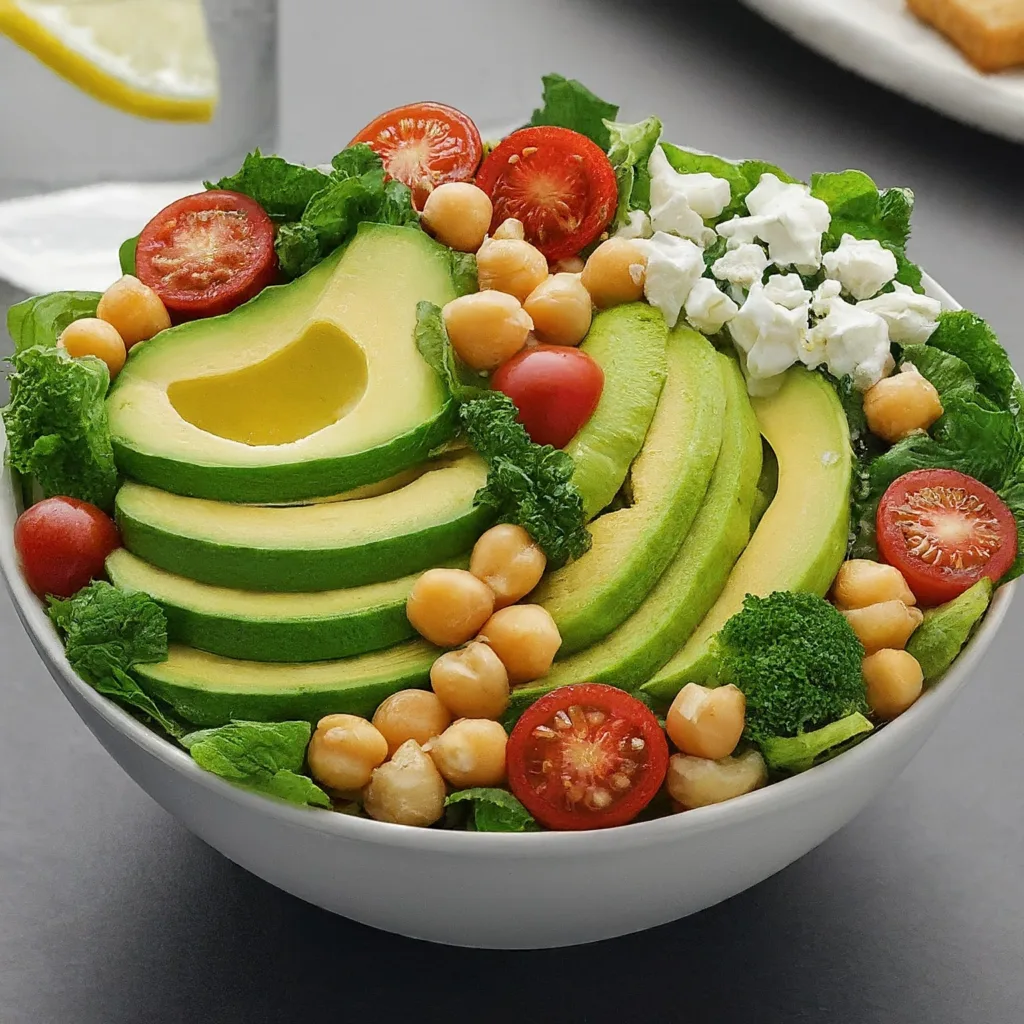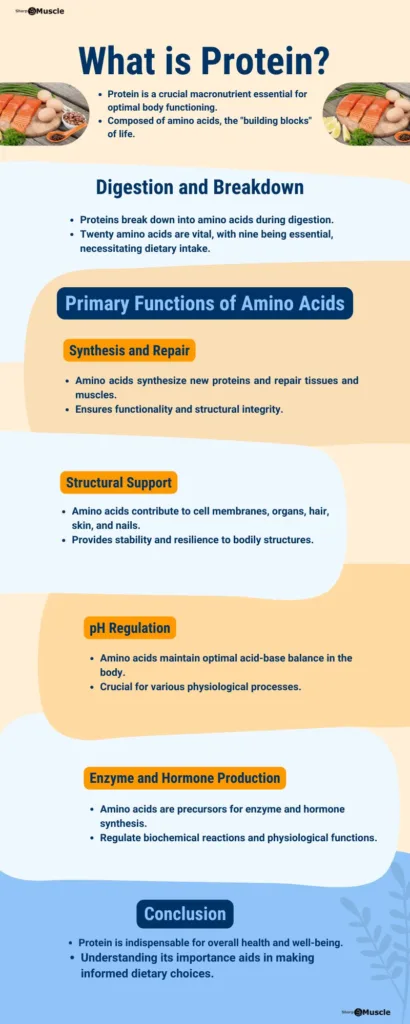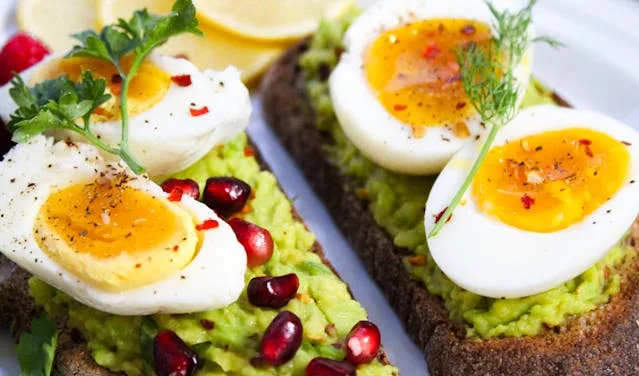Essentially, sculpting toned muscles is a personalized fitness journey that aims to chisel and shape the body, resulting in a more resilient, toned, and visually appealing physique.
In This Article
Creating a toned and sculpted physique involves dedication, consistency, and a comprehensive approach that considers various factors contributing to muscle development.
What is Toned Muscles, and why Is it important?
Sculpting toned muscles is a deliberate and strategic approach to enhancing the definition and strength of one’s musculature through targeted physical training and lifestyle choices. It involves a combination of specific exercises, nutrition planning, and holistic fitness practices aimed at achieving a well-defined and sculpted physique.
This process goes beyond merely building muscle mass; it focuses on refining the appearance of muscles, creating a balanced and aesthetically pleasing form. Sculpting toned muscles requires an understanding of muscle anatomy, effective workout routines that emphasize both isolation and compound movements, and a nutrition plan that supports muscle definition while maintaining overall health.
Top 10 Key Reasons Highlighting the Importance of Toned Muscles:
1. Stronger Muscles: Sculpting toned muscles involves targeted exercises that enhance muscle strength, promoting a resilient and robust physique. Increased muscle strength contributes to improved functional capacity and overall physical performance.
2. Metabolic Boost: Muscles play a crucial role in metabolism. Toned muscles have a higher metabolic rate, aiding in more efficient calorie burning. This not only supports weight management but also contributes to overall energy levels.
3. Improved Posture: Toned muscles play a crucial role in supporting proper posture. Strengthening core and postural muscles helps maintain alignment, reducing the risk of musculoskeletal issues and enhancing overall body balance.
4. Increased Strength and Reduced Illness: Engaging in muscle-toning activities bolsters the immune system and reduces the risk of chronic illnesses, including diabetes and cardiovascular issues. The synergy between muscle health and overall well-being contributes to a more robust defense against various health challenges.
5. Stronger Bones: Toning muscles is inherently linked to bone health. Weight-bearing exercises stimulate bone density, reducing the risk of osteoporosis and promoting skeletal strength.
6. Joint Stability: The development of toned muscles helps in providing stability to the joints. This, in turn, reduces the risk of injuries and enhances overall joint health, ensuring a more active and pain-free lifestyle.
7. Exercise Boosts Energy: Muscle-toning exercises improve cardiovascular health and circulation, leading to increased energy levels. The physiological response to exercise enhances vitality and combats feelings of fatigue.
8. Manage Stress: Toning muscles serve as a natural stress reliever. Exercise releases endorphins, promoting a positive mood and reducing stress levels. The act of sculpting muscles becomes a therapeutic means to manage daily stressors.
9. Enhance Your Quality of Life: Toned muscles translate into improved daily functioning and an enhanced quality of life. From performing routine activities with ease to participating in recreational pursuits, the impact of muscle tone is pervasive.
10. Firm Muscle Tone: The aesthetic aspect of firm muscle tone goes hand in hand with the functional benefits. Achieving a sculpted appearance not only boosts confidence but also reflects the dedication to maintaining a healthy and active lifestyle.
Understanding Muscle Anatomy
When considering exercise, many individuals typically envision aerobic activities such as jogging or cycling. While these exercises play a vital role in enhancing cardiovascular health, a well-rounded fitness regimen should encompass not only aerobic exercises but also strength training, flexibility training, and balance training.
Engaging in regular strength training offers a myriad of benefits for your bones, muscles, and connective tissue. Strengthening your muscles contributes to an elevated metabolic rate, aiding in weight management. To optimize health, the U.S. Department of Health and Human Services recommends incorporating strength training into your routine at least two times per week.
Structuring a strength training program can take various forms, and many individuals find it beneficial to pair specific muscle groups in their workouts. This approach, where different body parts are targeted on different days, provides muscles with ample rest between sessions, helping to prevent overtraining and fostering a more balanced fitness routine.
1. Key Muscle Groups for Toning
There are various muscle groups in the body, and exercises often engage multiple muscles simultaneously. Different workout examples and exercises for each muscle group are provided.
In your body, there exist three distinct types of muscles:
- Cardiac
- Smooth
- Skeletal
Cardiac muscles are responsible for regulating the heartbeat, while smooth muscles oversee involuntary functions like constricting blood vessels. Skeletal muscles, comprising around 40 percent of your body weight, are the muscles targeted in the gym that facilitate bodily movement. 1
Recognized as major muscle groups by many fitness experts, these five encompass:
- Chest
- Back
- Arms
- Abdominals
- Legs
- Shoulders
Furthermore, some individuals categorize these muscle groups into more specific areas, including:
- Calves
- Hamstrings
- Quadriceps
- Glutes
- Biceps
- Triceps
- Forearms
- Trapezius (traps, top of shoulders)
- Latissimus dorsi (lats, under the armpits)
Understanding these muscle types and their respective groupings is fundamental for anyone seeking a well-rounded and effective approach to fitness training.
Rarely do exercises exclusively target a single muscle group. Take the biceps curl, a widely practiced exercise for fortifying the biceps on the anterior part of your upper arm. While it primarily engages the biceps, additional muscles contribute to elbow flexion, including the brachialis beneath the biceps and the brachioradialis in the forearm. Furthermore, stabilizer muscles come into play to support the shoulder and core, ensuring efficient lifting of the weight.
When structuring your fitness regimen, it’s common to encounter exercises that fall into multiple categories. In general, the complexity of an exercise—measured by the number of joints involved—correlates with the variety of muscle groups engaged.
2. How Muscles Respond to Training
During your journey in strength training, you’ll witness notable physiological changes encompassing enhanced cardiorespiratory fitness, heightened muscle strength and endurance, a reduction in body fat percentage, and a subsequent rise in lean tissue. For instance, if you initiate a running program, your body adapts by adjusting oxygen intake, modifying how muscles respond to movement impact, and optimizing energy utilization.
As proficiency grows, muscles adapt by more efficiently converting oxygen and nutrients into energy, enabling you to sustain longer periods of running without fatigue. Anticipate two primary physiological adaptations in strength training: increased muscle strength and hypertrophy, or augmented muscle size.
Initially, strength gains result from motor learning, a neurological adaptation where nerves learn to facilitate more efficient muscle function. Engaging in heavy-weight strength training prompts neurological changes, leading to stronger muscles through enhanced activation of motor units with repeated exercises.
The second physiological adaptation is hypertrophy, categorized into sarcoplasmic and myofibrillar types. Sarcoplasmic hypertrophy involves an increase in fluid volume within muscle cells, occurring during submaximal load repetitions (typically 8 to 12). This type is prevalent in traditional strength training.
Conversely, myofibrillar hypertrophy supports neural adaptations, resulting in strong muscles with moderate growth. This type involves changes in muscle fibers—actin and myosin filaments—leading to increased muscle mass and cross-sectional area. Understanding these adaptations clarifies how strength training yields both enhanced strength and muscle size.
Understanding the Mechanism of Muscle Growth
Muscle growth, scientifically termed hypertrophy, unfolds as a multifaceted and intriguing phenomenon in response to targeted physical stress. Skeletal muscle, known as the most adaptable tissue in the body, undergoes a transformative process during intense activities like weightlifting, leading to what is referred to as muscle injury or trauma. This trauma activates satellite cells situated on the muscle fibers’ periphery, prompting them to unite and consequently augment the muscle fiber.
Certain hormones play a pivotal role in facilitating muscle growth. These hormones govern satellite cells and contribute to essential functions such as:
- Dispatching cells to the muscles post-exercise
- Generating new blood capillaries
- Mending muscle cells
- Regulating muscle mass
For instance, engaging in resistance exercises prompts the release of growth hormone from the pituitary gland. The magnitude of hormone release correlates with the intensity of the exercise undertaken. Growth hormone serves as a catalyst for metabolism, converting amino acids into protein, a process integral to fortifying and enlarging muscle tissues.
Crafting a Tailored Workout Plan
Crafting a tailored workout plan involves taking into account an individual’s fitness goals, current fitness level, any health concerns or limitations, and personal preferences. It’s important to create a plan that is realistic, achievable, and enjoyable in order to maintain long-term adherence.
In crafting an effective workout, prioritizing exercises that target major muscle groups—quads, glutes, hamstrings, chest, back, and core—is paramount. Opting for compound movements ensures efficiency by activating multiple muscle groups simultaneously, fostering holistic strength development. For beginners, initiating with a full-body routine a few times per week is recommended. This approach allows gradual intensity and resistance increments, supporting a progressive and sustainable fitness journey.
12 Weeks Workout Plan for Sculpting Toned Muscles
The following workout plan, for sculpting toned muscles, employs strategic principles, incorporating a balance of heavy and light days to optimize both strength and muscle definition. With a focus on targeted muscle groups and a carefully structured routine, this strategic 12-week workout plan aims to provide a comprehensive and effective roadmap for individuals aspiring to sculpt and tone their physique.
Let’s delve into the intricacies of this strategic workout plan, designed to elevate your fitness journey to new heights.
Workout schedule
| DAYS | WORKOUT |
|---|---|
| DAY-1: | Chest and Traps (Heavy Day) |
| DAY-2: | Back and Biceps (Heavy Day) |
| DAY-3: | Legs and Shoulders (Heavy Day |
| DAY-4: | Chest and Triceps (Light Day) |
| DAY-5: | Back and Biceps (Light Day) |
| DAY-6: | Legs and Shoulders (Light Day) |
| DAY-7: | Off Day |
In the context of a workout plan, “heavy” and “light” days refer to variations in the intensity and volume of exercises. These distinctions are made to optimize the balance between building strength and achieving muscle definition.
1. Heavy Days:
- Objective: Focus on lifting heavier weights with lower repetitions.
- Purpose: Promotes maximal strength gains by challenging the muscles with higher resistance.
- Benefits: Enhances muscle hypertrophy, increases overall strength, and builds a solid foundation for muscle definition.
2. Light Days:
- Objective: Engage in exercises with lighter weights and higher repetitions.
- Purpose: Aims to target endurance and muscle definition by incorporating more repetitions with reduced resistance.
- Benefits: Supports muscle toning, endurance improvement, and aids in the definition of muscle contours without excessive strain.
By alternating between heavy and light days within a workout routine, individuals can strike a balance between building raw strength and refining muscle definition. This strategic approach helps prevent overtraining, allows for adequate recovery, and maximizes the overall effectiveness of the fitness regimen.
Sculpting Toned Muscles Workout: A Targeted Workout Plan
DAY-1: Chest, Triceps, and Abs Workout
Chest and Triceps:
- Warm-Up: Perform a combination of push-ups and triceps press down for two sets, aiming for 20-25 repetitions in each set.
- Super Set:
- 2A. Barbell Bench Press
- 2B. Barbell Skull Crusher
- Complete 5 sets, targeting 6-8 repetitions in each set, with a resting period of 2-3 minutes (after 2A and 2B completed).
- Super Set:
- 3A. Incline Bench Press
- 3B. Overhead Dumbbell Extension
- Perform 5 sets, aiming for 6-8 repetitions per set, with a resting period of 2-3 minutes (after 3A and 3B completed).
- Super Set:
- 4A. Weighted Push-Ups
- 4B. Weighted Dips
- Execute 5 sets with a target of 6-8 repetitions per set, resting for 2-3 minutes between sets (after 4A and 4B completed).
Abs:
- Regular Set:
- 5A. Reverse Crunch
- Complete 3 sets with 15-20 repetitions in each set, resting for 45 seconds between sets.
- Regular Set:
- 6A. Rope Crunch
- Execute 3 sets with 15-20 repetitions in each set, with a 45-second rest between sets.
- Regular Set:
- 7A. Opt for either Ab Roller exercises or Planks (if it is then 60-120 seconds hold)
- Perform 3 sets with 15-20 repetitions in each set, allowing a 45-second rest between sets.
DAY-2: Back, Biceps, and Cardio
Back and Biceps:
- Warm-Up: Commence with a warm-up consisting of rows and dumbbell curls using light weights, completing two sets with 20-25 repetitions in each set.
- Super Set:
- 2A. Wide Grip Lat Pulldown
- 2B. Barbell Curl
- Engage in 5 sets, targeting 6-8 repetitions per set, and allow a rest period of 2-3 minutes between sets.
- Super Set:
- 3A. Dumbbell Rows
- 3B. Dumbbell Hammer Curl
- Carry out 5 sets, aiming for 6-8 repetitions in each set, with a resting period of 2-3 minutes.
- Super Set:
- 4A. T-Bar Rows
- 4B. Reverse Bar Bicep Curl
- Complete 5 sets with a goal of 6-8 repetitions per set, resting for 2-3 minutes between sets.
Cardio: Conclude the session with a 10-minute walk followed by 20 minutes of running on the treadmill, achieving a total cardio duration of 30 minutes.
DAY 3: Legs, Shoulders, and Abs
Legs and Shoulders:
- Warm-Up: Commence your session with a warm-up, incorporating bodyweight squats and shoulder presses. Complete two sets with 20-25 repetitions in each set.
- Super Set:
- 2A. Barbell Squats
- 2B. Barbell Shoulder Press
- Execute 5 sets with a target of 6-8 repetitions per set, allowing a 2-3 minute rest between sets.
- Super Set:
- 3A. Barbell Rack Deadlift
- 3B. Dumbbell Front Raise
- Perform 5 sets with 6-8 repetitions in each set, resting for 2-3 minutes between sets.
- Super Set:
- 4A. Standing Calf Raises
- 4B. Barbell Shrugs
- Complete 5 sets, targeting 6-8 repetitions in each set, with a resting period of 2-3 minutes.
Abs:
- Regular Set:
- 5A. Reverse Crunches
- Execute 3 sets with 15-20 repetitions in each set, resting for 45 seconds between sets.
- Regular Set:
- Rope Crunches
- Perform 3 sets with 15-20 repetitions in each set, with a 45-second rest between sets.
- Regular Set:
- Choose between Ab Roller exercises or Planks (if it is then 60-120 seconds hold)
- Complete 3 sets with 15-20 repetitions in each set, allowing a 45-second rest between sets.
DAY-4: Chest and Triceps
Chest and Triceps:
- Warm-Up: Initiate your workout with a warm-up, combining push-ups and triceps press-downs. Complete two sets with 20-25 repetitions in each set.
- Super Set:
- 2A. Dumbbell Incline Press
- 2B. Triceps Press Down
- Execute 3 sets with 12-15 repetitions per set, resting for 1-2 minutes between sets.
- Super Set:
- 3A. Dumbbell Fly
- 3B. Dumbbell Kick Back
- Perform 3 sets, aiming for 12-15 repetitions in each set, with a resting period of 1-2 minutes.
- Super Set:
- 4A. Cable Crossover (High Angle Cable Fly)
- 4B. Bench Dips
- Complete 3 sets with a target of 12-15 repetitions per set, resting for 1-2 minutes between sets.
Cardio: Conclude your session with 10 minutes of walking followed by 20 minutes of running on the treadmill, accumulating a total of 30 minutes for your cardio routine.
DAY-5: Back and Biceps
Back and Biceps:
- Warm-Up: Kickstart your back and biceps session with a warm-up featuring rows and dumbbell curls using light weights. Complete two sets with 20-25 repetitions in each set.
- Super Set:
- 2A. Reverse Chin-Ups
- 2B. Cable Curls
- Execute 3 sets with 12-15 repetitions per set, allowing a rest period of 1-2 minutes between sets.
- Super Set:
- 3A. Seated Cable Rows
- 3B. Frog Dumbbell Concentration Curls
- Perform 3 sets, targeting 12-15 repetitions in each set, with a resting period of 1-2 minutes.
- Super Set:
- 4A. Dumbbell Pull Over
- 4B. High Angle Cable Curls
- Complete 3 sets, aiming for 12-15 repetitions per set, with a rest interval of 1-2 minutes.
Abs:
- Regular Set:
- Reverse Crunches
- Execute 3 sets with 15-20 repetitions in each set, resting for 45 seconds between sets.
- Regular Set:
- Rope Crunches
- Perform 3 sets with 15-20 repetitions in each set, with a 45-second rest between sets.
- Regular Set:
- Choose between Ab Roller exercises or Planks (if it is then 60-120 seconds hold)
- Complete 3 sets with 15-20 repetitions in each set, allowing a 45-second rest between sets.
DAY-6: Legs and Shoulders
Legs and Shoulders:
- Warm-Up: Begin your legs and shoulders session with a warm-up comprising bodyweight squats and shoulder presses. Complete two sets with 20-25 repetitions in each set.
- Super Set:
- 2A. Dumbbell Front Squats
- 2B. Dumbbell Shoulder Press
- Perform 3 sets, aiming for 12-15 repetitions per set, and rest for 1-2 minutes between sets.
- Super Set:
- 3A. Dumbbell Split Squats
- 3B. Dumbbell Side Raise (Single Hand)
- Carry out 3 sets, targeting 12-15 repetitions in each set, with a resting period of 1-2 minutes.
- Super Set:
- 4A. Barbell Hip Thrust
- 4B. Dumbbell Reverse Fly
- Complete 3 sets with a goal of 12-15 repetitions per set, resting for 1-2 minutes between sets.
Cardio: Finish your workout with 30 minutes of stationary bike of cardio.
Crafting a Nutrition Plan for Muscle Sculpting
Achieving the ideal physique involves more than just rigorous workouts; a well-crafted nutrition plan plays a pivotal role in sculpting and toning muscles. To embark on this journey effectively, it’s essential to understand the intricate relationship between nutrition and muscle development.
This comprehensive guide will delve into the key elements of crafting a nutrition plan tailored for muscle sculpting, covering essential nutrients, macronutrient balance, hydration, and dietary strategies that complement your fitness goals. Prepare to enhance your sculpting journey through strategic and purposeful nutritional choices.
Nutrition Planning for Sculpting Toned Muscles
Prior to initiating the Sculpting Toned Muscles Nutrition Plan, your initial step involves determining your daily caloric requirements. Recognizing that individual factors such as height, weight, and age vary, it is crucial to tailor your caloric intake to support muscle gain.
Follow the three steps outlined below to ascertain your ideal caloric needs.
Step-1: Calculate the BMR
Utilize an online BMR calculator or a BMR mobile app. Input your height, weight, and age, assuming a high activity level (6 days a week). For instance, if your BMR is determined to be 1700 calories.
Step-2: Calculate the Maintenance Calories
- Formula: BMR x 1.5 (Moderate Active – 3-5 days)
- Formula: BMR x 1.7 (Very Active – 5-6 days)
Using the example, Maintenance Calories = 1700 x 1.7 = 2890 calories.
Step-3: Subtract Extra Calories for Fat/Weight Loss
- To lose 0.5lbs per week: Subtract 250 calories (2890 – 250 = 2640).
- To lose 1lb per week: Subtract 500 calories (2890 – 500 = 2350).
- To lose 2lbs per week: Subtract 1000 calories (2890 – 1000 = 1890).
Macro Breakdown for Sculpting Toned Muscles Nutrition Plan
- Total Calories: 2000
- Carbohydrates (34%): 170g
- Protein (43%): 213g
- Fats (23%): 53g
Crafting your nutrition plan with these tailored guidelines ensures optimal support for your muscle sculpting journey.
Non-veg and Veg Sculpting Toned Muscles Nutrition Plan
A. Non-veg Nutrition Plan
- Breakfast: Scrambled Eggs
- Ingredients: 1 Whole Egg, 7 Egg Whites, 1 Apple or Pear
- Macro-Breakdown: Calories – 289, Protein-35g, Carb-26g, Fat-5g
- Snacks: Protein Pancake
- Ingredients: 1 Whole Egg, 1 scoop Whey, 1sp Raisins, 1sp Chia seed, 1/2 Banana + Cinnamon
- Macro-Breakdown: Calories – 314, Protein-34g, Carb-22g, Fat-10g
- Lunch: Paneer Potato
- Ingredients: 60g Paneer, 200g Sweet Potato, Green Pepper / Broccoli (Cook vegetable and potato, then add paneer)
- Macro-Breakdown: Calories – 452, Protein-22g, Carb-55g, Fat-16g
- Pre-Workout:
- 1sp Pre Workout Supplement (Bullet or any other)
- 500mg Carnitine
- Post-Workout:
- Ingredients: 1 or 2 scoop Whey Protein, 5g Glutamine, 300ml Cold Water
- Macro-Breakdown: Calories – 200, Protein-50g, Carb-0g, Fat-0g
- Dinner: Chicken Quinoa Beans
- Ingredients: 100g Chicken, 2/3 cup Quinoa or Brown Rice, 1/3 cup Kidney Beans, Chopped Tomato
- Macro-Breakdown: Calories – 414, Protein-36g, Carb-54g, Fat-6g
- Before Bed Meal: Slow Protein
- Ingredients: 100ml Milk, 120ml Water, 1 scoop Casein or Whey Protein, 1sp Peanut Butter, 5g Glutamine, Pinch Cinnamon
- Macro-Breakdown: Calories – 340, Protein-36g, Carb-13g, Fat-16g
This Non-veg Sculpting Toned Muscles Nutrition Plan is meticulously designed to provide a balanced and protein-rich diet to support your fitness goals.
B. Veg Nutrition Plan
- Breakfast: Scrambled Eggs
- Ingredients: 1 Whole Egg, 7 Egg Whites, 1 Apple or Pear
- Macro-Breakdown: Calories – 289, Protein-35g, Carb-26g, Fat-5g
- Snacks: Protein Pancake
- Ingredients: 1 Whole Egg, 1 scoop Whey Protein, 1sp Raisins, 1sp Chia seed, 1/2 Banana + Cinnamon
- Macro-Breakdown: Calories – 314, Protein-34g, Carb-22g, Fat-10g
- Lunch: Paneer Potato
- Ingredients: 60g Paneer, 200g Sweet Potato, Green Pepper / Broccoli (Cook vegetable and potato, then add paneer)
- Macro-Breakdown: Calories – 452, Protein-22g, Carb-55g, Fat-16g
- Pre-Workout:
- 1sp Pre Workout Supplement (Bullet or any other)
- 500mg Carnitine
- Post-Workout:
- Ingredients: 1 or 2 scoop Whey Protein, 5g Glutamine, 300ml Cold Water
- Macro-Breakdown: Calories – 200, Protein-50g, Carb-0g, Fat-0g
- Dinner: Soy Chunks Quinoa Beans
- Ingredients: 50g Soy Chunks, 2/3 cup Quinoa or Brown Rice, 1/3 cup Kidney Beans, Tomato, Onion
- Macro-Breakdown: Calories – 384, Protein-34g, Carb-53g, Fat-4g
- Before Bed Meal: Slow Protein
- Ingredients: 100ml Milk, 120ml Water, 1 scoop Casein or Whey Protein, 1sp Peanut Butter, 5g Glutamine, Pinch Cinnamon
- Macro-Breakdown: Calories – 340, Protein-36g, Carb-13g, Fat-16g
This vegetarian nutrition plan is thoughtfully crafted to ensure a well-rounded and protein-packed diet, supporting your fitness goals with plant-based alternatives.
The Crucial Role of Hydration
Proper hydration is not merely a mundane necessity but a cornerstone of overall well-being and fitness. Amidst the intricate tapestry of sculpting toned muscles and adhering to a meticulous nutrition plan, the significance of staying adequately hydrated cannot be overstated.
Hydration and Optimal Muscle Function: In the pursuit of sculpting toned muscles, hydration emerges as a linchpin for optimal muscle function. Adequate water intake plays a pivotal role in maintaining electrolyte balance, ensuring smooth muscle contractions, and preventing cramps during rigorous workouts. Hydrated muscles are more resilient, perform better, and recover efficiently, contributing significantly to the sculpting journey.
Cognitive Performance and Focus: Beyond the physical realm, hydration is a potent ally for cognitive performance. Dehydration can lead to cognitive fatigue, impair concentration, and diminish overall mental acuity. In the context of sculpting toned muscles, maintaining focus during workouts is imperative, making hydration an invaluable component of achieving peak performance.
Temperature Regulation and Endurance: Efficient temperature regulation is paramount during strenuous physical activities. Hydration aids in the body’s natural cooling mechanisms through sweating, preventing overheating, and enhancing endurance. For those engaged in demanding sculpting routines, staying adequately hydrated becomes a strategic measure to sustain peak performance and push through challenging workouts.
Nutrient Transportation and Recovery: Hydration is the unsung hero in nutrient transportation. It facilitates the efficient delivery of nutrients, including vital proteins, to muscle cells. This not only promotes muscle growth but also accelerates post-workout recovery. In the intricate dance of nutrition, hydration acts as an enabler, ensuring that the body reaps the maximum benefits from the carefully crafted nutrition plans.
The Water-Energy Connection: In the realm of fitness, water serves as the fundamental source of energy production. Dehydration can lead to a noticeable dip in energy levels, hindering workout intensity and overall performance. As individuals sculpt their bodies, maintaining optimal energy levels becomes a cornerstone, and proper hydration becomes the catalyst for sustaining the energy required for transformative workouts.
Bottom line
Sculpting Techniques
Sculpting toned muscles is a nuanced art that extends beyond the realms of routine workouts. The journey towards a finely chiseled physique involves adopting specific sculpting techniques designed to target, define, and refine muscle groups. Delving into the intricacies of these techniques unveils a comprehensive approach to achieving optimal muscle definition.
I. Isolation Exercises for Targeted Toning
Isolation exercises stand as the bedrock of sculpting techniques, focusing on specific muscle groups to enhance definition. From bicep curls to leg extensions, these exercises isolate a single muscle or muscle group, intensifying the workload and fostering precise sculpting. Incorporating isolation movements into workout routines ensures a well-rounded approach to defining muscles.
II. Compound Movements for Overall Definition
While isolation exercises target specific areas, compound movements are the sculptor’s broad strokes, engaging multiple muscle groups simultaneously. Exercises like squats, deadlifts, and bench presses promote overall muscle development, contributing to a sculpted physique that boasts both strength and definition. A balanced integration of isolation and compound movements forms the cornerstone of effective sculpting.
Progressive Overload Strategies
Progressive overload stands as the linchpin of muscle sculpting, a principle that propels individuals beyond their fitness plateaus toward continuous growth and refinement. Understanding and implementing effective progressive overload strategies are essential for those seeking to sculpt toned muscles and unlock their body’s full potential.
I. Gradual Intensity Increase
The cornerstone of progressive overload is a gradual increase in workout intensity. This involves systematically elevating the resistance, whether through heavier weights, increased repetitions, or heightened difficulty in exercises. By pushing the body beyond its current limits, individuals stimulate muscle adaptation, fostering growth and enhanced definition.
II. Periodization Techniques
Structured periodization involves organizing training programs into distinct cycles, each with specific goals and intensity levels. Commonly divided into phases like hypertrophy, strength, and power, periodization ensures a strategic progression that optimizes muscle adaptation. This systematic variation prevents stagnation, keeping the body responsive to new challenges.
III. Manipulating Repetition Ranges
Varying the number of repetitions performed during sets is a potent progressive overload strategy. While higher repetitions contribute to muscular endurance, lower repetitions with heavier weights stimulate muscle hypertrophy and strength. A thoughtful rotation between different repetition ranges ensures a comprehensive approach to sculpting muscles.
IV. Adjusting Time Under Tension (TUT)
Controlling the tempo of exercises, also known as Time Under Tension (TUT), is a nuanced strategy for progressive overload. Slowing down the eccentric (lengthening) and concentric (shortening) phases of movements intensifies the workload on muscles, promoting increased muscle fiber recruitment and enhanced sculpting potential.
V. Incorporating Advanced Techniques
Advanced techniques, such as drop sets, supersets, and rest-pause training, inject innovation into progressive overload. These techniques challenge muscles in unique ways, breaking the monotony of routine and stimulating additional growth. Strategic incorporation of these methods ensures a well-rounded and dynamic approach to sculpting.
VI. Progressive Resistance Training Programs
Structured resistance training programs, designed to systematically increase resistance over time, embody the essence of progressive overload. Linear progression involves a steady increase in weights, while nonlinear methods, like the double progression model, adjust both weight and repetitions. These programs provide a clear roadmap for sustained muscle development.
Bottom line
The Vital Role of Rest and Recovery in the Sculpting Journey
In the relentless pursuit of sculpting toned muscles, recognizing the paramount importance of rest and recovery is not a sign of weakness but a strategic pillar of success. The body’s ability to adapt, grow, and define muscles hinges on the delicate balance between intense workouts and adequate recovery. Here, we unravel the profound significance of rest and recovery in the sculpting journey.
I. Significance of Adequate Rest
Rest is not just a pause between workouts; it is a dynamic phase where the body undergoes crucial repair and regeneration. Adequate sleep and rest days are essential for muscle recovery, preventing burnout, and optimizing the efficiency of subsequent training sessions. Quality rest is the unsung hero that transforms hard work into tangible muscle definition.
II. Incorporating Rest Days Effectively
Strategic incorporation of rest days into workout schedules is not a concession but a smart maneuver. These days allow muscles to repair microtears, replenish glycogen stores, and adapt to the stress of previous workouts. Balancing intense training with well-timed rest days ensures sustained progress and guards against overtraining pitfalls.
III. Sleep as a Recovery Pillar
The significance of quality sleep in the sculpting journey cannot be overstated. During sleep, the body releases growth hormone, a key player in muscle repair and growth. 2
Aimed at achieving 7-9 hours of sleep per night becomes a non-negotiable aspect of effective recovery, ensuring that each sculpting session builds upon a well-rested foundation.
IV. Foam Rolling and Active Recovery
Beyond passive rest, active recovery methods like foam rolling and light stretching contribute to enhanced recovery. Foam rolling aids in breaking down muscle knots, improving flexibility, and reducing muscle soreness. These practices, integrated into rest days, promote blood circulation, expediting the healing process.
V. Mental Restoration
Rest is not only physical but also a mental reprieve. Intense sculpting routines demand focus and mental fortitude. Incorporating activities like meditation, mindfulness, or hobbies on rest days provides mental restoration, fostering a rejuvenated mindset for upcoming challenges.
VI. Strategic Use of Deload Weeks
Strategic incorporation of deload weeks, where training intensity is intentionally reduced, serves as a proactive measure against overtraining. Deload weeks provide a window for the body to recover fully, preventing the accumulation of fatigue and supporting long-term sculpting goals.
Bottom line
Incorporating Flexibility Training: A Key Dimension in Sculpting Toned Muscles
In the intricate tapestry of sculpting toned muscles, the role of flexibility training emerges as a dynamic and often underestimated dimension. Beyond the realms of traditional strength workouts, flexibility training introduces a spectrum of benefits that enhance muscle definition, refine posture, and contribute to the overall aesthetic appeal of a well-sculpted physique. Delving into the nuances of incorporating flexibility training unveils its transformative impact on the sculpting journey.
I. Benefits of Stretching in Toning
Flexibility training, encompassing static and dynamic stretching, holds the key to unlocking a range of benefits in the pursuit of toned muscles. Stretching elongates muscles, increasing their range of motion and promoting better muscle fiber recruitment during workouts. 3 This heightened flexibility translates to improved performance, reduced risk of injuries, and a sculpted physique with fluid movement.
II. Yoga and Pilates for Muscle Definition
Yoga and Pilates, revered for their holistic approach to physical and mental well-being, seamlessly integrate into the sculpting journey. These disciplines emphasize controlled movements, body awareness, and breath control, fostering a mind-muscle connection crucial for optimal sculpting. Incorporating yoga and Pilates into training schedules contributes to improved flexibility, core strength, and enhanced muscle definition.
III. Dynamic Warm-ups for Sculpting Success
Flexibility training isn’t confined to post-workout routines; dynamic warm-ups infused with flexibility exercises prepare the body for sculpting sessions. Incorporating leg swings, arm circles, and torso twists not only primes muscles for activity but also enhances flexibility, ensuring that the body is ready to engage in a full range of sculpting movements.
IV. Enhanced Recovery through Flexibility
Flexibility training extends its influence beyond the confines of workout routines into the realm of recovery. Post-workout stretching, be it through yoga poses or dedicated stretches, accelerates the recovery process by reducing muscle soreness, promoting relaxation, and ensuring that sculpted muscles recover efficiently for subsequent challenges.
V. Addressing Muscle Imbalances
Flexibility training serves as a corrective force, addressing muscle imbalances that may arise during intense sculpting regimens. By focusing on stretches that target specific muscle groups, individuals can rectify imbalances, enhance symmetry, and contribute to a sculpted physique characterized by harmonious proportions.
VI. Integrating Mindfulness into Flexibility Training
Flexibility exercises provide a unique opportunity for mindfulness. As individuals engage in stretches, they cultivate a deeper connection with their bodies, honing in on sensations and areas of tension. This heightened awareness not only contributes to effective flexibility training but also enriches the overall sculpting experience.
Bottom line
Supplements for Toned Muscles
Supplements, when strategically integrated, can serve as powerful allies in the pursuit of sculpted and toned muscles. Understanding the role of supplements in enhancing muscle definition, supporting recovery, and filling nutritional gaps is integral to crafting a comprehensive sculpting regimen. Here, we unravel the nuances of smart supplement choices for individuals committed to sculpting their physique.
- Essential Nutrients for Muscle Health: Ensuring a robust intake of essential nutrients lays the foundation for sculpting success. Supplements such as multivitamins and mineral complexes become pillars, fortifying the body with the necessary vitamins and minerals vital for muscle function, recovery, and overall health.
- Protein Supplements for Optimal Results: Protein, the building block of muscles, takes center stage in the sculpting journey. Whey protein, renowned for its rapid absorption, becomes an invaluable supplement, particularly post-workout, promoting muscle protein synthesis. Additionally, casein protein, with its slow-release properties, aids in sustained muscle nourishment during periods of rest and sleep.
- Branched-Chain Amino Acids (BCAAs): BCAAs, comprising essential amino acids like leucine, isoleucine, and valine, play a pivotal role in muscle protein synthesis. Supplementing with BCAAs, especially during workouts, supports muscle recovery, reduces muscle soreness, and safeguards against muscle breakdown, crucial elements in the sculpting journey.
- Creatine for Strength and Definition: Creatine, a naturally occurring compound in the body, stands out as a proven ally for sculpting toned muscles. This supplement enhances strength, promotes lean muscle mass, and contributes to overall muscular definition. Incorporating creatine into the regimen ensures a sustained source of energy during high-intensity workouts.
- Omega-3 Fatty Acids for Joint Health: Supporting joint health is paramount in a rigorous sculpting routine. Omega-3 fatty acids, available in fish oil supplements, exhibit anti-inflammatory properties, reducing joint stiffness and promoting overall joint well-being. This supplement becomes particularly valuable in maintaining flexibility and mobility during intense workouts.
- Vitamin D for Overall Well-Being: Vitamin D, often deficient in individuals with limited sun exposure, plays a multifaceted role in the sculpting journey. Beyond its role in bone health, vitamin D supports muscle function, immune system modulation, and overall well-being. Supplementing with vitamin D ensures that the body operates optimally during the sculpting process.
- Smart Pre-Workout Choices: Intelligent pre-workout supplementation can amplify the effectiveness of sculpting sessions. Caffeine, beta-alanine, and citrulline malate are examples of pre-workout supplements that enhance energy levels, delay fatigue, and improve blood flow, contributing to more productive and impactful workouts.
- Probiotics for Digestive Health: A well-functioning digestive system is essential for nutrient absorption and overall health. Probiotic supplements foster a healthy gut microbiome, aiding in digestion and nutrient utilization. A balanced gut contributes to an optimized environment for sculpting success.
Strategies of Toning for Different Body Types
In the diverse landscape of fitness, acknowledging and embracing individual body types is a cornerstone of effective toning. The pursuit of sculpted and toned muscles is not a one-size-fits-all endeavor; it’s a personalized journey that considers the unique characteristics and needs of various body types.
Here, we delve into strategies for tailoring toning approaches to different body types, fostering inclusivity and optimizing results for all.
- Understanding Body Types: Before embarking on the toning journey, recognizing one’s body type lays the groundwork for a targeted approach. Whether ectomorph, mesomorph, or endomorph, each body type comes with its own set of challenges and advantages. Understanding these distinctions allows for a customized strategy that aligns with individual genetic predispositions.
- Ectomorphs: Fine-Tuning for Definition: Ectomorphs, characterized by a slender and lean build, often face challenges in gaining muscle mass. For this body type, emphasis should be placed on a calorie surplus, incorporating resistance training with moderate repetitions, and ensuring an adequate intake of nutrients to support muscle growth. A focus on compound movements and progressive overload becomes pivotal for sculpting well-defined muscles.
- Mesomorphs: Leveraging Natural Athleticism: Mesomorphs, blessed with a naturally athletic physique and an aptitude for muscle development, benefit from a balanced approach to toning. Resistance training, including both compound and isolation exercises, is key. Mesomorphs can capitalize on their muscle-building potential by incorporating variety into their workouts, ensuring comprehensive development across muscle groups.
- Endomorphs: Strategic Approach to Lean Toning: Endomorphs, characterized by a tendency to store fat, thrive with a strategic approach to toning that prioritizes fat loss alongside muscle definition. High-intensity interval training (HIIT) and a combination of resistance and cardiovascular exercises become crucial. A focus on portion control and a well-balanced diet supports the dual goals of shedding excess fat and sculpting lean muscles.
- Tailoring Nutrition for Each Body Type: Nutrition plays a pivotal role in tailoring toning strategies. Ectomorphs may require a higher calorie intake, mesomorphs benefit from a balanced macronutrient profile, and endomorphs find success in a controlled calorie diet with an emphasis on nutrient-dense foods. Individualized nutritional plans align with the specific needs of each body type.
- Adaptive Workout Plans: Adaptability is key when tailoring toning strategies. As bodies evolve and respond to training, adjusting workout plans becomes essential. Regular assessments of progress allow for fine-tuning, ensuring that the chosen approach remains effective for the individual’s unique body type.
Conclusion
In the pursuit of a sculpted physique, the orchestration of scientific principles and strategic planning becomes the guiding force. The journey to sculpting toned muscles transcends the realm of mere physical training; it is a harmonious synthesis of muscle anatomy, progressive overload, and a meticulous nutrition plan designed for optimal results.
Muscle anatomy serves as the canvas upon which the sculpting process unfolds. Delving into the intricacies of key muscle groups lays the foundation for targeted training, ensuring that each sculpting effort is precision-guided. From the dynamic quads to the stabilizing core, every muscle plays a unique role in crafting the symphony of a sculpted physique.
At the heart of sculpting lies the principle of progressive overload – a crescendo of intensity that propels muscles toward growth. The gradual increase in resistance, whether through weight, repetitions, or workout complexity, challenges muscles to adapt and evolve. This strategic elevation ensures that the sculpting journey remains dynamic, pushing boundaries and unlocking new dimensions of definition.
A nutrition plan tailored for muscle sculpting emerges as the virtuoso conductor, orchestrating the intricate balance of macronutrients essential for optimal results. Proteins, the maestros of muscle building, join forces with carbohydrates and fats to compose a nutritional symphony that fuels workouts, promotes recovery, and propels the sculpted physique towards its zenith.
In the sculpting odyssey, there is an art to fine-tuning every aspect of the composition. From defining realistic timeframes and setting toning goals to crafting a tailored workout plan that intertwines strength training and effective cardio strategies, each element contributes to the evolving masterpiece. The sculpting journey, much like a masterpiece, requires dedication and a commitment to refining the nuances of form and function.
As the sculpted physique takes shape, the process becomes an evolving aesthetic narrative. It is not merely about conforming to societal ideals but sculpting a physique that resonates with individuality. Each individual, with their unique body type, embraces the sculpting journey as a personal narrative, weaving together strength, flexibility, and resilience into a tapestry of physical excellence.
In conclusion, sculpting toned muscles transcends the ordinary; it is a resounding crescendo of scientific precision and strategic finesse. Understanding the intricacies of muscle anatomy, embracing the challenge of progressive overload, and adhering to a nuanced nutrition plan collectively contribute to the crafting of a physique that stands as a testament to dedication and artistry. The journey, much like a symphony, is a collaboration of elements, each playing its role in the creation of a sculpted masterpiece that reflects the commitment to physical excellence.
- Noto RE, Leavitt L, Edens MA. “Physiology, Muscle.” [Updated 2023 May 1]. In: StatPearls [Internet]. Treasure Island (FL): StatPearls Publishing; 2023 Jan-. Available from: https://www.ncbi.nlm.nih.gov/books/NBK532258/.[↩]
- Vitale KC, Owens R, Hopkins SR, Malhotra A. “Sleep Hygiene for Optimizing Recovery in Athletes: Review and Recommendations.” Int J Sports Med. 2019 Aug;40(8):535-543. doi: 10.1055/a-0905-3103. Epub 2019 Jul 9. PMID: 31288293; PMCID: PMC6988893.[↩]
- Page P. “Current concepts in muscle stretching for exercise and rehabilitation.” Int J Sports Phys Ther. 2012 Feb;7(1):109-19. PMID: 22319684; PMCID: PMC3273886.[↩]




